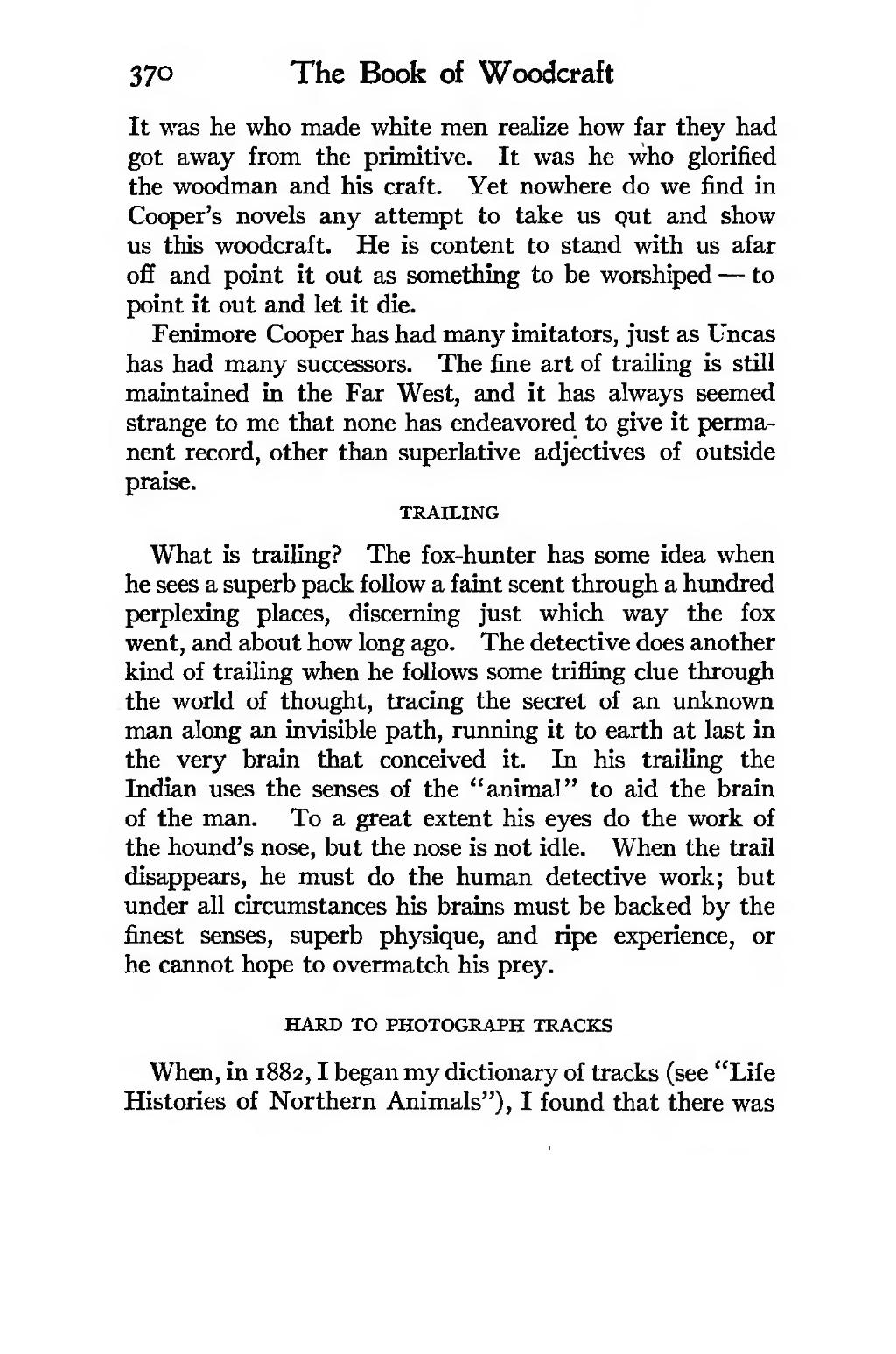37° The Book of Woodcraft It was he who made white men realize how far they had got away from the primitive. It was he who glorified the woodman and his craft. Yet nowhere do we find in Cooper's novels any attempt to take us put and show us this woodcraft. He is content to stand with us afar off and point it out as something to be worshiped — to point it out and let it die. Fenimore Cooper has had many imitators, just as Uncas has had many successors. The fine art of trailing is still maintained in the Far West, and it has always seemed strange to me that none has endeavored to give it perma- nent record, other than superlative adjectives of outside praise. TRAILING What is trailing? The fox-hunter has some idea when he sees a superb pack follow a faint scent through a hundred perplexing places, discerning just which way the fox went, and about how long ago. The detective does another kind of trailing when he follows some trifling clue through the world of thought, tracing the secret of an unknown man along an invisible path, running it to earth at last in the very brain that conceived it. In his trailing the Indian uses the senses of the "animal" to aid the brain of the man. To a great extent his eyes do the work of the hound's nose, but the nose is not idle. When the trail disappears, he must do the human detective work; but under all circimistances his brains must be backed by the finest senses, superb physique, and ripe experience, or he cannot hope to overmatch his prey. HARD TO PHOTOGRAPH TRACKS When, in 1882, 1 began my dictionary of tracks (see "Life Histories of Northern Animals"), I found that there was
Stránka:book 1913.djvu/392
Z thewoodcraft.org
Tato stránka nebyla zkontrolována
